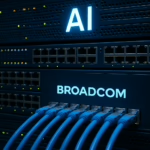- Big tech companies have spent $155 billion on AI infrastructure in 2025 to date, surpassing U.S. federal spending on social services and education.
- Projected AI capital expenditure for next fiscal year may exceed $400 billion, with Microsoft, Amazon, Alphabet and Meta each planning tens of billions more.
- Investors welcomed the spending surge, propelling market caps—Microsoft reached a $4 trillion valuation—and igniting concerns about sustainability, competition, and regulatory oversight.
Major technology firms have entered a full‑scale capital spending war to build the infrastructure that powers artificial intelligence. Combined, Microsoft, Amazon, Alphabet (Google’s parent), and Meta have already poured $155 billion into AI-related infrastructure in 2025, an amount greater than the U.S. government’s annual outlay on education and social services.
Microsoft alone plans to spend $100 billion in the coming fiscal year, while Amazon, Alphabet, and Meta are preparing similarly massive capital pushes—$100 billion, $85 billion, and up to $72 billion, respectively. Investors responded positively, boosting stock valuations and giving Microsoft a $4 trillion market cap.
Why It Matters
Across Silicon Valley, megawatt-scale data centers rise as the engines of a new era in artificial intelligence. From Seattle to Mountain View, tech giants are racing to scale up infrastructure faster than ever—a push driven by ambition, competition, and the promise of AI‑driven transformation.
AI model development—particularly for large language models, autonomous systems, and real‑time analytics—requires immense infrastructure: specialized servers, GPUs, data centers, cooling systems, and power management. Capital expenditures (capex) function as a proxy for strategic investments in AI, and 2025 has seen these soar to unprecedented levels.
Meta doubled its capex year‑over‑year to $30.7 billion, while Alphabet neared $40 billion, Amazon topped $55.7 billion, and Microsoft will exceed $30 billion in just one quarter. Analysts project total spending across the four firms could exceed $400 billion in 2026 – a staggering escalation from last year.
Key Quotes
- Microsoft CFO Amy Hood stated, “We will continue to invest against the expansive opportunity ahead.”
- Apple’s Tim Cook—historically cautious on AI—acknowledged a shift: “We are significantly growing our investment… embedding AI across all of our devices and platforms.”
Analysis
Implications
- Strategic dominance: These investments aim to cement leadership in AI, with infrastructure as the foundational competitive moat.
- Economic ripple effects: Massive data center projects drive demand for semiconductors, renewable energy, and real estate, reshaping local economies.
- Equity and ethics: Access to AI capabilities may be concentrated in a few platforms, raising concerns over monopolistic behavior, algorithmic fairness, and digital divides.
- Investor optimism vs. risk: While markets rewarded aggressive spending with surging valuations, future returns depend on monetization of AI products and services.
Controversies and Unknowns
- Environmental footprint: Data centers are power- and water-intensive. How sustainable are current expansion plans?
- Regulatory scrutiny: Governments may push back on dominant players’ lock‑in power or data control, potentially imposing new rules on AI infrastructure.
- Capital discipline: Can this scale of investment yield proportionate returns, or will investors become wary if AI revenue fails to materialize at expected levels?
Looking Ahead
This frenzy of AI infrastructure investment indicates the technology is entering a new phase—one defined by scale, capital intensity, and global competition. Microsoft, Amazon, Alphabet, Meta (and increasingly Apple) are laying groundwork not just for next‑gen AI systems, but for ecosystems that may define digital power in coming decades.
Going forward, stakeholders will watch whether regulators act to ensure competitive fairness and sustainability. Financial markets will test whether this trillion‑dollar class of investment translates into real innovation and returns. And society will wrestle with the implications of infrastructure‑enabled AI capabilities—from automation to personal intelligence agents and beyond.
If spending trajectories hold, AI is no longer just a software race—it is a hardware arms race, shaping future governance, competition, and daily life.
Final Thought
With $155 billion already deployed in 2025, and projections soaring past $400 billion, the scale of AI infrastructure investment redefines the mid‑2020s tech landscape. These moves are reshaping competitive dynamics, economic patterns, and strategic priorities across sectors. As infrastructure becomes the bedrock of AI dominance, the world enters a new chapter in which capital, computation, and control converge—revealing both opportunity and challenge in equal measure.





